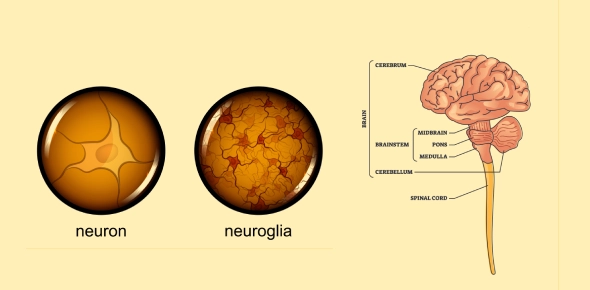The master controlling and communicating system of the body?
Three or more processes?
Brain and spinal cord, integration and command center?
Single, short process?
Gaps in the myelin sheath between adjacent Schwann cells, sites where...
Two processes (axon and dendrite)
Ions move quickly across the membrane, movement is along their...
The potential difference across the membrane of a resting neuron?
Whitish, fatty segmented sheath around most long axons, it functions...
Transmit impulses from the CNS to effector organs?
Transmits impulses away from the synapse?
Carry impulses from skin, skeletal muscles, and joints to the brain?
Conscious control of skeletal muscles?
Regulates smooth muscle, cardiac muscle, and glands?
Dense collections of myelinated fibers?
Electrical impulses carried along the length of axons, always the same...
Contain the sympathetic and parasympathetic divisions?
Carry impulses away from the CNS?
Mostly soma and unmyelinated fibers?
Transmit impulses toward the CNS?
*Short lives, local changes in membrane potential*Decrease in...
Conducts impulses toward the synapse?
Used to integrate, send, and receive information, changes produced by...
What are the functions of the nervous system?
Which division of the PNS contain Sensory and Visceral afferent...
Formed by Schwann cells in the PNS?
Synapses between the axon of one neuron and the soma of another?
Fluid filled space separating the presynaptic and postsynaptic...
Excitable cells that transmit electrical signals?
Phagocytes that monitor the health of neurons?
The flow of electrical charge between two points?
*A brief reversal of membrane potential with a total amplitude of 100...
____________________ neurotransmitters cause depolarizations?
Transmit impulses from visceral organs to the brain?
What are the 2 main parts of the Motor Division?
Prevents the neuron from generating an action potential, ensures that...
Released at the neuromuscular junction, synthesized and enclosed in...
Interpretation of sensory input?
They line the central cavities of the brain and spinal column?
Synapses between the axon of one neuron and the dendrite of another?
A junction that mediates information transfer from one neuron to...
Short tapering and diffusely branched processes, receptive or input...
Generate and transmit action potentials, secrete neurotransmitters...
Slender processes of uniform diameter arising from the hillock, long...
Remaining nucleus and cytoplasm of a Schwann Cell?
Hindrance to charge flow?
Passive, or leakage, channels?
The membrane retunrs to its resting membrane potential?
Shuttle signals through CNS pathways?
Sodium gates are closed, potassium gates are open, repolarization is...
The larger the diameter, the faster the ______?
Both myelinated and unmyelinated fibers are present, myelin sheaths...
Voltage-gated channels?
Na+ Channel*Closed when the intracellular environment is negative*Na+...
________________ neurotransmitters cause hyperpolarizations?
Surround fibers of the PNS?
Contains the nucleus and a nucleolus, the major biosynthetic center,...
Chemically gated channels?
The inside of the membrane becomes less negative?
Most abundant versatile and highly branched glial cells, they cling to...
Voltage measured between two points?
*Na+ and K+ channels are closed*Activation Gates - closed*Inactivation...
Input travels along one pathway to a specific destination, works in an...
Substance with low electrical resistance?
What is the correct order for the phases of the Action Potential?
What are the 2 functional divisions of the PNS?
What are the two principal cell types of the nervous system?
Envelopes an axon in a trough, encloses the axon with its plasma...
Time from the opening of the Na+ activation gates until the closing of...
*Na+ permeability increses, membrane potential reverses*Na+ gates are...
Input travels along several pathways, pathways are integrated in...
Branched cells that wrap CNS nerve fibers?
Support and brace neurons, anchor neurons to their nutrient supplies,...
Paired spinal and cranial nerves, carries messages to and from the...
What are the ways movement occurs along axons?
Substance with high electrical resistance?
Mechanically gated channels?
*Sodium inactivation gates close*K+ gates open*K+ exits the cell,...
The inside of the membrane becomes more negative than the resting...
Monitoring stimuli?
Response to Stimuli?
Their plasma membrane function in electrical signaling, cell-to-cell...
Include dopamine, norepinephrine, epinephrine, serotning, histamine,...
Na+ - K+ Gated Channel*Closed when a neurotransmitter is not bound to...
Measure of potential energy generated by separated charge?
Specialized for the release and reception of neurotransmitters?
Include GABA, Glycine, Apartate, Glutamate, Found only in the CNS?
Less common variety, correspond to gap junctions found in other cell...
Surround neuron cell bodies with ganglia?
A schwann cell surrounds nerve fibers but coiling does not take place,...
Found in both the CNS and PNS, provokes pain sensation?
*Potassium gates remain open, effux of K+*neuron is insensitive to...
Activates the intracellular receptor guanylyl cyclase, is involved in...
Cells that surround and wrap neurons?
Main regulator of cGMP in the brain?
Cells that provide a supportive scaffolding for neurons, segregate and...
Armlike extensions from the soma, called tracts in the CNS and nerves...
Act as natural opiates, reduce pain perception, bind to the same...










 Back to top
Back to top






